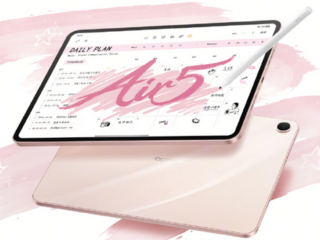- Home
- Science
- Science News
- NASA Telescopes Reveal Hidden Properties of X Ray Pulsar RX J0032.9 7348
NASA Telescopes Reveal Hidden Properties of X-Ray Pulsar RX J0032.9-7348
NASA’s NuSTAR and NICER telescopes have uncovered new insights into RX J0032.9-7348, revealing its pulse pattern, spin behavior, and fluctuating luminosity.

Photo Credit: arXiv (2025)
NuSTAR shows RX J0032.9-7348 light curves and hardness ratio
Pulsars are neutron stars rotating rapidly, emitting electromagnetic radiation in various wavelengths, including radio waves, optical, X-ray, and gamma-ray. Identified as a X ray transient source in the Small Magellanic Cloud (SMC) about 30 years ago, RX J0032.9-7348 has been classified as an X-ray Pulsar after detecting X-ray pulsations with a period of approximately 7.02 seconds after experiencing an X-ray brightening in October 2024.To take a closer look at it, astronomers have incorporated two NASA X-ray telescope, NICER and NuSTAR.
Discovery and Observational Campaign
According to Handbook of X-ray and Gamma ray Astrophysics, Accretion-powered X-ray pulsars (XRPs) are neutron stars within binary systems that emit X-rays in regular pulses, powered by the accretion of matter from a companion star. However, although RX J0032.9-7348 has been known for decades, very little is known regarding its properties and its optical counterpart has not been identified. Therefore, a team of astronomers led by Birendra Chhotaray of the Physical Research Laboratory (PRL) in Ahmedabad, India, decided to take a closer look at this pulsar with NuSTAR and NICER.
Dr Chhotaray and his team were able to verify the X-ray pulsation period of RX J0032.9-7348 through their observations and they also discovered that this pulsar has a double-peak pulse profile throughout a wide energy range, with small changes in the form of energy dependence.
Findings
Results of the observational campaign, published on the arXiv preprint server, gives insight of the spin dynamics and luminosity of this pulsar. The accretion processes during the X-ray brightening phase increases its angular momentum. It results into a spin-up of approximately -0.00033 seconds per day.
The luminosity of the pulsar varied from 8.2 undecillion to 37 undecillion erg/s during the monitoring campaign. The researchers report that no evidence of iron emission line or cyclotron resonance scattering features was found in the energy spectrum of this source.
Get your daily dose of tech news, reviews, and insights, in under 80 characters on Gadgets 360 Turbo. Connect with fellow tech lovers on our Forum. Follow us on X, Facebook, WhatsApp, Threads and Google News for instant updates. Catch all the action on our YouTube channel.
Related Stories
- Samsung Galaxy Unpacked 2025
- ChatGPT
- Redmi Note 14 Pro+
- iPhone 16
- Apple Vision Pro
- Oneplus 12
- OnePlus Nord CE 3 Lite 5G
- iPhone 13
- Xiaomi 14 Pro
- Oppo Find N3
- Tecno Spark Go (2023)
- Realme V30
- Best Phones Under 25000
- Samsung Galaxy S24 Series
- Cryptocurrency
- iQoo 12
- Samsung Galaxy S24 Ultra
- Giottus
- Samsung Galaxy Z Flip 5
- Apple 'Scary Fast'
- Housefull 5
- GoPro Hero 12 Black Review
- Invincible Season 2
- JioGlass
- HD Ready TV
- Laptop Under 50000
- Smartwatch Under 10000
- Latest Mobile Phones
- Compare Phones
- Xiaomi 17 Ultra Leica Edition
- Xiaomi 17 Ultra
- Huawei Nova 15
- Huawei Nova 15 Pro
- Huawei Nova 15 Ultra
- OnePlus 15R
- Realme Narzo 90x 5G
- Realme Narzo 90 5G
- Asus ProArt P16
- MacBook Pro 14-inch (M5, 2025)
- OPPO Pad Air 5
- Huawei MatePad 11.5 (2026)
- Huawei Watch 10th Anniversary Edition
- OnePlus Watch Lite
- Acerpure Nitro Z Series 100-inch QLED TV
- Samsung 43 Inch LED Ultra HD (4K) Smart TV (UA43UE81AFULXL)
- Asus ROG Ally
- Nintendo Switch Lite
- Haier 1.6 Ton 5 Star Inverter Split AC (HSU19G-MZAID5BN-INV)
- Haier 1.6 Ton 5 Star Inverter Split AC (HSU19G-MZAIM5BN-INV)

















